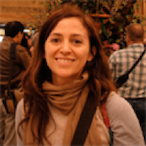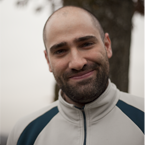Human Pose, Shape and Action
3D Pose from Images
2D Pose from Images
Beyond Motion Capture
Action and Behavior
Body Perception
Body Applications
Pose and Motion Priors
Clothing Models (2011-2015)
Reflectance Filtering
Learning on Manifolds
Markerless Animal Motion Capture
Multi-Camera Capture
2D Pose from Optical Flow
Body Perception
Neural Prosthetics and Decoding
Part-based Body Models
Intrinsic Depth
Lie Bodies
Layers, Time and Segmentation
Understanding Action Recognition (JHMDB)
Intrinsic Video
Intrinsic Images
Action Recognition with Tracking
Neural Control of Grasping
Flowing Puppets
Faces
Deformable Structures
Model-based Anthropometry
Modeling 3D Human Breathing
Optical flow in the LGN
FlowCap
Smooth Loops from Unconstrained Video
PCA Flow
Efficient and Scalable Inference
Motion Blur in Layers
Facade Segmentation
Smooth Metric Learning
Robust PCA
3D Recognition
Object Detection
Flowing Puppets

We approach the problem of estimating the pose of charactres in TV shows video sequences.
Our approach is based on optical flow. People are moving entities, and their motion has distinctive characteristics. Often the whole body has a distinctive motion from the background; considering the upper human body, it is also likely that the fastest moving parts are the hands. The articulated structure of the body often generates different motion patterns for each body part. In the recent years the computation of dense optical flow has made large progress in terms of accuracy and computation speed. Based on these observations, we approach the pose estimation problem relying on the dense optical flow as a source of information for better pose estimation.
We precompute the dense optical flow between neighboring frames in the sequences, forward and backward in time. We consider the computed flow as an observation, and exploit it in three ways: a) to estimate hands locations b) to propagate good solutions across frames c) to "link" pose hypotheses in adjiacent frames through the flow to jointly evaluate per-frame image likelihoods.
We represent the upper body with the Deformable Structures model and we exploit its region-based body part representation to estimate how the body moves over time. We call the corresponding moving DS models Flowing Puppets.
Code
We provide the code used for the experiments in the paper.
The code is written in Matlab and has been used with version R2013b.
The package includes images for one of the training clips and one of the test clips in the VideoPose2 dataset for demo purposes. The full VideoPose2 dataset can be downloaded from the VideoPose2 website. We used the VideoPose2-fullframes version.
Data
We provide the hand detection maps for running our code on the whole VideoPose2 test set.
Video
Members
Publications


